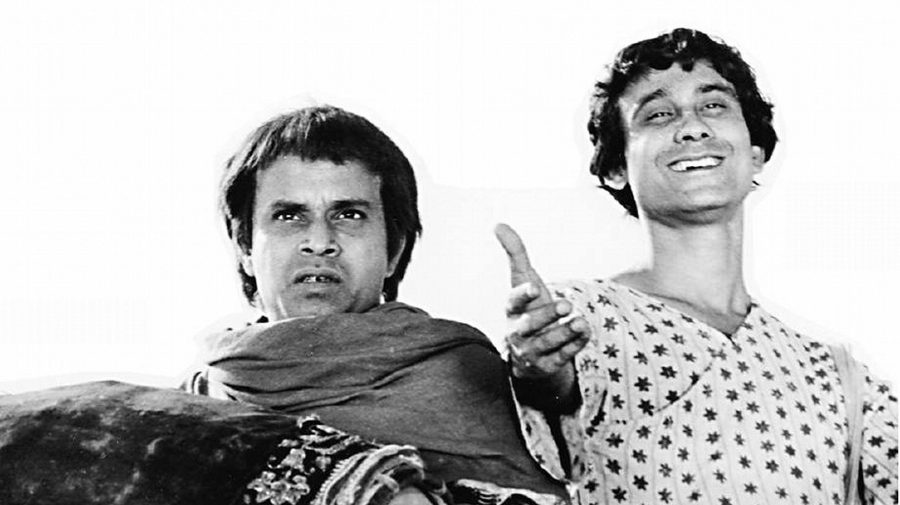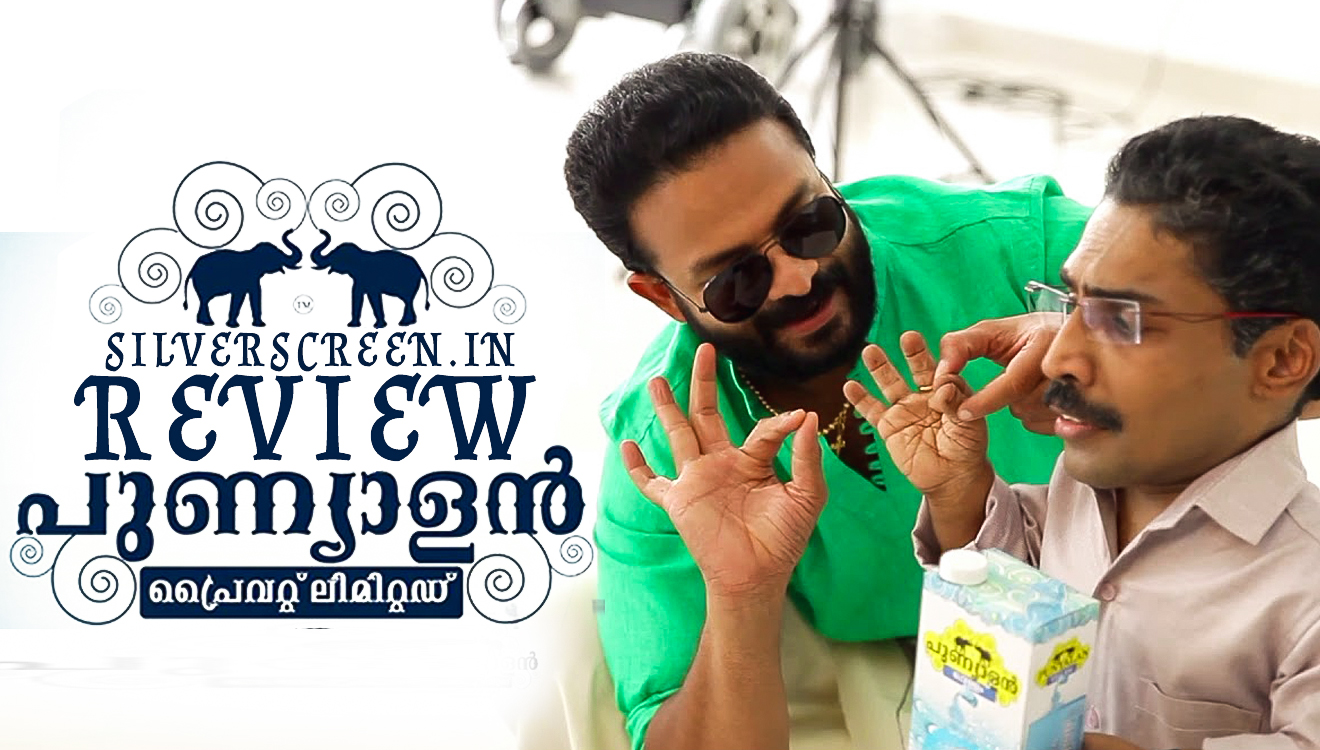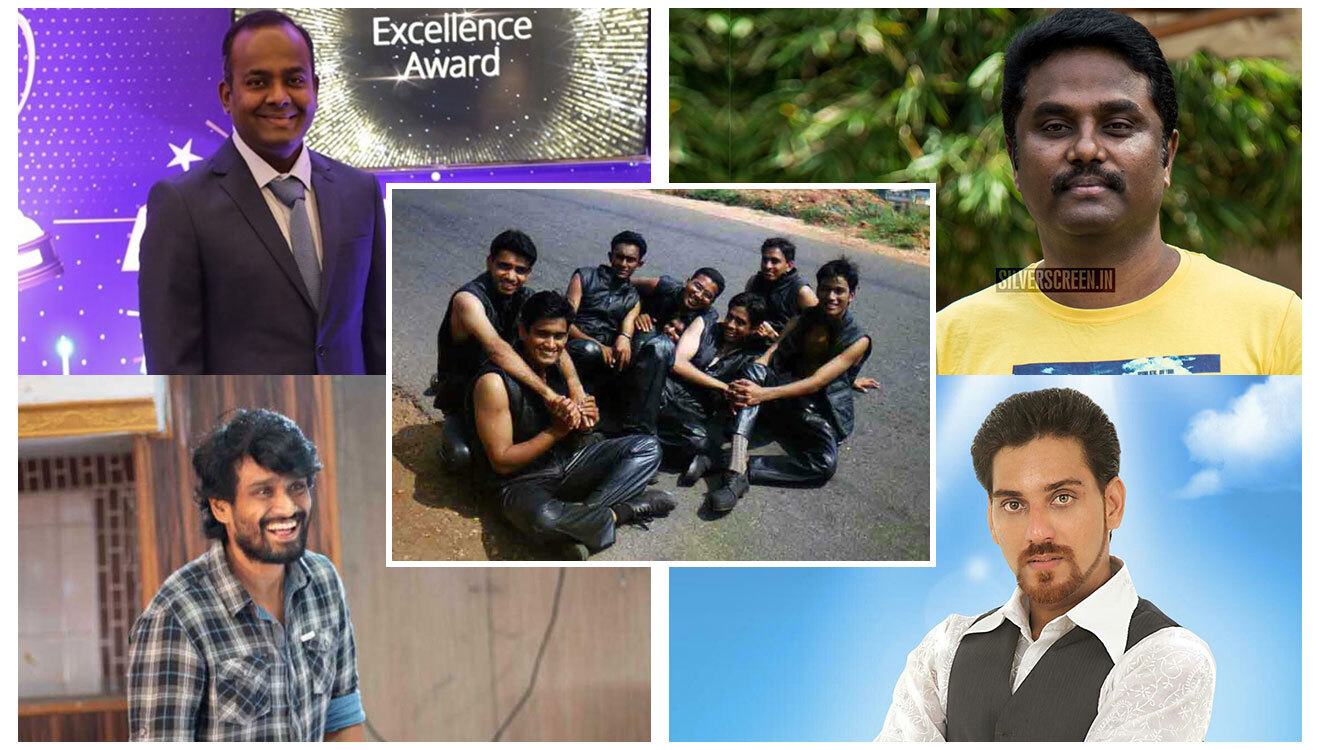As a child, Satyajit Ray’s Goopy Gyne Bagha Byne terrified me. Despite the story appearing nonsensical and rib-ticklingly funny (the adults laughed mostly), the film presented in black and white was a story not so commonly heard by children growing up in a rather modern world. Used to stories of princes and princesses eloping and finding missing shoes, the world of Goopy and Bagha was a whole different ball game and not for everybody.
But, the film does get better with age. And as I grew older, the little nuances in the film, the subliminal messages carefully laced here and there didn’t make it so nonsensical.
The film is based on a story by Ray’s grandfather Upendra Kishore Raychowdhuri. The story has an unconventional beginning – two underdogs who have a chance meeting in a forest. Goopy is banished after he embarrasses the king of his village with his terrible singing. Bagha cannot play the drums and is exiled for similar reasons. The two outcasts face their first hardship together – a tiger in the forest. They sing and play the drums to scare it off but inadvertently impress the king of ghosts – who has flashlights all over him and a high-pitched voice.

Ray included the “ghost dance” in the film with camera tricks that were considered too novel for that time. The entire dance sequence had used stop motion effect mingled with a watery film reel, with the former giving it a psychedelic look. Special effects were still in its early stages but with Ray creativity knew no bounds.
The eerie background music and the psychedelic dance performed by the ghosts, a rather long sequence, is enthralling enough to keep a child transfixed to the screen. But there’s something unsettling about it, something inexplicably… strange.
Watching it as an adult, the video is nothing short of a technical feat. For a film made in the late 1960s, at a time when special effects, particularly in Indian cinema, was a dream, Ray and his team managed to make a video of a ghost performance using simple equipment and melding instruments to each dance.
The ‘bhooter naach‘ or the ghost dance features different strata of ghosts and the music accompanying them is directly proportional. The dance begins with translucent figures in white, ghost dancers at a royal court perhaps. The accompanied instrument to their dance has a regal ring to it, so does the dance.
This is followed by what sounds like footsteps approaching, of soldiers heading towards a battlefield with their swords and shields in hand. The music is more cautious here, in tow with each step taken by this class of ghosts.
And then ghosts in western wear appear with hats and monocles. They perhaps depict the colonisers who died in battle (or leading battles) and became ghosts of this forest. The music to their appearance has a hint of arrogance in it, much like the way they stand.
The final class of ghosts represent the fat lawmakers and religious noblemen. The ghatam is used as a way of comical depiction of these ghosts running around all high and mighty.
Recommended
While the video began peacefully, chaos soon seeps in. The fat lawmakers run amok with a book, panic writ large in their steps. The court dancers or rather the middle class men dance in glory, steps faster and more pronounced. The soldier ghosts battle it out, their steps less cautious and more aggressive now. And the ghosts of the colonisers panic, just like the fat lawmakers.
The final bits of the dance showcase all the classes of ghosts in one frame, where the middle class men or the court dancers are right at the top while the lawmakers and the noblemen occupy the lowest position in the frame.
The ghost dance wasn’t just about the funny music or dance and figures, but a satirical take on societies and class division in the country. In the real world, they might be on top but in the ghost world, it’s all reversed. As children, it’s difficult to read between the lines and still be moved. As adults, it’s almost difficult to not notice the message that Ray had included in a quintessential children’s film.
What resonated with the children is the film’s simple yet discernible message: The good triumphing over evil. The underdogs emerging as the real heroes, the village bumpkins becoming worthy of a princess. Of course, the iconic food scenes is on a cinematic par with those depicted in Ratatouille, Chef. Goopy and Bagha thulping on a smorgasbord of dishes never fails to entertain. Years later, the actors had revealed that due to the erratic shoot schedules, what they were eating was not as deliciously or enticing as it looked on-screen.
Goopy Gyne Bagha Byne got two National Awards and was the first of a three-part series. The second one Hirak Rajar Deshe had the same protagonists but the film had a strong political subtext. The third and the last one, Goopy Bagha Phire Elo, was directed by Ray’s son Sandip Ray.
At the time when technological reach was not much, Ray’s Goopy Gyne Bagha Byne was a fantasy flick, a musical and a social commentary that holds relevance among all generations. It makes us wonder why filmmakers are not adventurous when it comes to children’s movies.
Feature Image: IMDB



